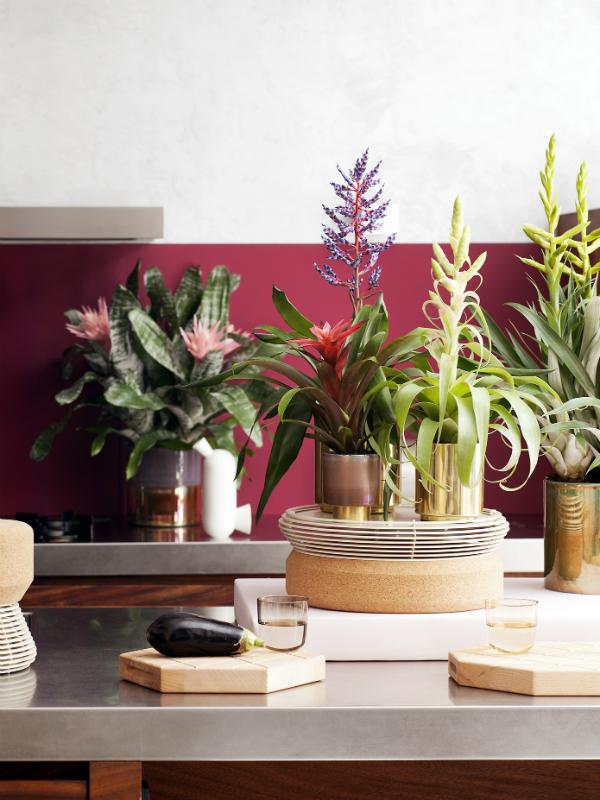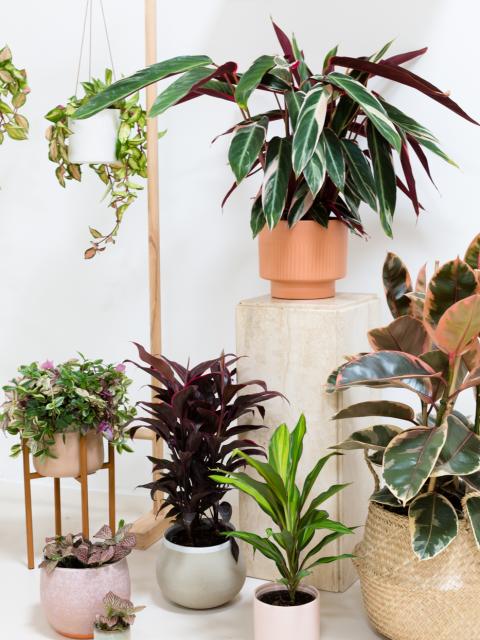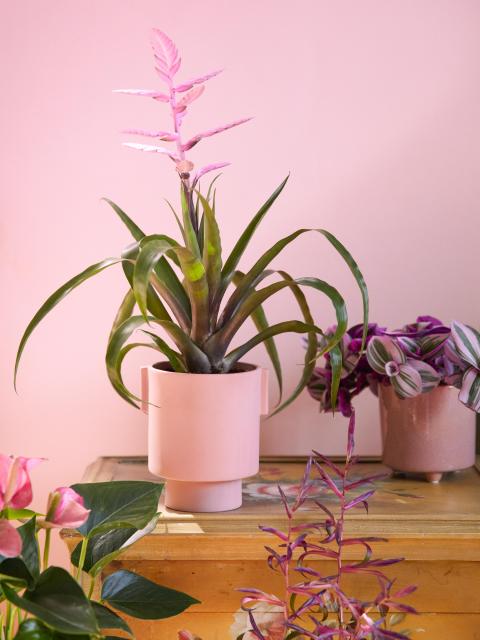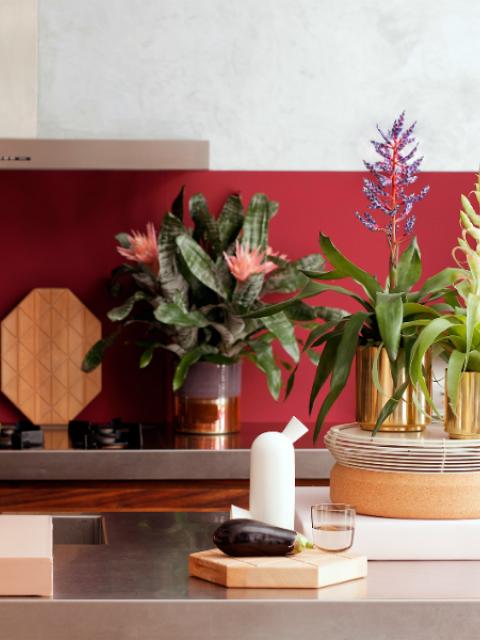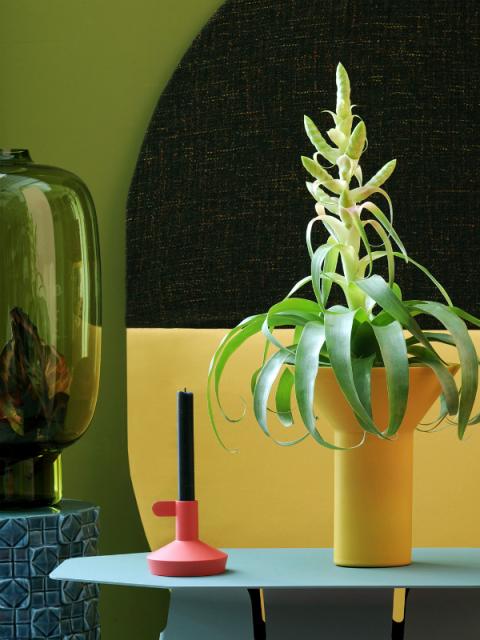Colours and shapes
A majestic pink flower, a purple and pink plume or a red or orange torch emerges from the silver/grey/green 'vase' of the Aechmea’s rosette. And as if that’s not spectacular enough, Aechmea’s showstopper sometimes also changes colour during its flowering. What’s referred to as the flower for the sake of convenience is actually mainly fantastic bracts. The flowers themselves are fairly small and not as flamboyant as the rest of the plant.
High tech nature
Aechmea has tiny scales on its leaves which form a super-efficient absorption system. In desert regions they also serve as a heat shield, preventing the plant from losing moisture unnecessarily in the burning sun. The more silvery the leaves and the downier they look, the more scales your Aechmea has. This bromeliad also looks after you: it purifies the air of formaldehyde (an unhealthy gas that occurs in tobacco smoke, amongst other things, but which is also used as a preservative in cosmetics and can be released from furniture). It also produces oxygen at night rather than during the day, unlike many other plants. That makes it the ideal bedroom companion.
Origin
Aechmea is native to tropical and subtropical Central and South America and arrived in Europe in around 1828, where it made the transition from rare orangery treasure to popular housemate. The name is derived from the Greek word 'aichmê', which means lance or spike. With a big of imagination the spiky, thorn-like bracts could prick just like a spear.
Symbolism
The silvery colour of Aechmea ’s leaves has shaped its symbolic meaning. The plant represents the same values as silver, such as purity, strength, clarity and focus.

